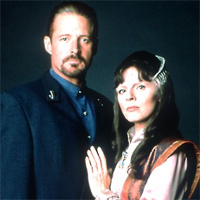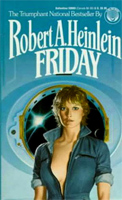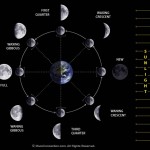Usually sequels don’t live up to the original, but sometimes they surpass it. I was talking to a friend recently, trying to come up with a list of them, but it was hard. What made it harder was that I wanted to limit it to SF/F genre films. We came up with three, and I found a few more. We also found several that were debateable or didn’t quite make it. Here we go:
The Winners:
The Empire Strikes Back: This one is so often quoted as the declining-sequel rule breaker that it has to go on the list, and I think it really does deserve it. As much as I loved Star Wars as a kid, Empire turned the franchise – ever so briefly – into more serious adult fare.
Star Trek II: The Wrath of Khan: This one gets in easily, not only because it was a great film, but because the original Star Trek: The Motion Picture was so limp that it’s a miracle this one was ever made. In my not so humble opinion, this film saved the franchise.
Star Trek: First Contact: I was tempted to knock this one out, because it’s not technically a sequel as much as it’s the next installment in an ongoing series. However, I can buy the argument that Star Trek: Generations started off a new film sequence, and that let’s this one in. So, while Generations tried to do far too much and didn’t pull much of it off, First Contact focused on one thing: stopping the Borg from destroying our history. It had a tight story, cool characters, and plus… you know… THE BORG!
Road Warrior: Some people don’t even realize this is a sequel, but the original Mad Max was an Australian blockbuster. I love it – and would love it even more without the terrible dubbing job – but I have to say that Road Warrior has a better style, better car chases, and a better plot.
Aliens: My friend argued against this one, not because he thought the original Alien was better but because they were so different as to almost be different genres. Alien is a walk through a dark alley, almost a horror film, while Aliens is a military-action rollercoaster. But I think they’re close enough that I’m going to include it.
Now on the many Honorable Mentions:
For a Few Dollars More: This is well outside the bounds by genre since it’s a western. It’s also questionable whether it’s even a sequel to Fistful of Dollars. However, it is the second in what most folks refer to as “the Man with No Name” trilogy that ends with the classic The Good, the Bad, and the Ugly. In some ways, this one was the high point of the trilogy for me, and Clint Eastwood almost played second fiddle to Lee Van Cleef’s search for long-delayed justice for a very personal crime. If you’re a fan of gun-fighting westerns, you need to see this one.
The Four Musketeers: This is historical fiction as opposed to SF/F fiction, but the main reason I don’t like seeing it on lists of great sequels is that it’s not really a sequel. It’s the second half of the Three Musketeers movie that was released the year before. The director shot so much film that he decided to break it up, leaving quite the legal mess for the film industry to sort out in contract law for generations to come. However, all that aside, this is a fabulous film, and this pair of Musketeer films (with a young Michael York) is in my opinion the best of all the Musketeer tellings.
Kill Bill, Vol 2: This one also shows up on great sequel lists, but I also don’t think it belongs for the same reason that The Four Musketeers didn’t belong. It’s not a sequel. It’s the second half of the film, and of course it’s better than “the original”. It has the climax, you dummy. But yeah, great film. The first one ripped out your carotid in a nasty arterial spray, but the second one grabbed on tight and yanked your heart out through your severed neck. Ok, not that bloody, but you get the idea.
Spider-Man 2 and The Dark Knight: I think that both of these sequels were better than the originals, but despite all the fancy weapons and cool gadgets, I don’t consider comic movies to be either science fiction or fantasy. I think they’re their own genre like horror or mystery.
Toy Story 2: The original was awesome, but this sequel knocked it out of the park. I just don’t think it qualifies as SF/F.
Terminator 2: My friend lobbied hard for this one, but personally, I think the original is still the best of the series. Yes, the second one had better effects and a pretty good story, but the original one hangs together so much better and has that wonderful bittersweet romance.
Superman 2: Some people rate this one as being better than the original, and given the stupid fly-around-the-earth-backwards time travel in the first film, I can see their argument. However, the people making this argument are usually referring to the Donner cut of the film rather than the theatrical release, and I haven’t seen the Donner cut. If I do, I might join their camp, but in the meantime, I’m sticking with the origin-heavy original. But yeah, it’s still comic, not SF.
So, what great sequels did I miss? What about book sequels instead of movie sequels? Or for that matter, does this make you think of any terrible sequels? I’ve got half a mind to follow this up with a list of sequels so bad that they don’t officially exist, e.g. Highlander II or Star Trek V.
This is the fourth book in Butcher’s epic fantasy Fury series. Here we follow Tavi and others as they repel the Canim invasion and battle against a rebellious High Lord. There are a fair number of dark deeds done because the alternative was worse, but in the end, good prevails, of a sort.




 On the fantasy side, Lord of the Rings had Aragorn marry Arwen with hints of half-elf children in their future. I’ve seen a few human-demon pairings as well as human-vampire pairings, but very few actual weddings. (Sorry, I’m not aware of anything called Twigh Lite.)
On the fantasy side, Lord of the Rings had Aragorn marry Arwen with hints of half-elf children in their future. I’ve seen a few human-demon pairings as well as human-vampire pairings, but very few actual weddings. (Sorry, I’m not aware of anything called Twigh Lite.) Then we get into different kinds of marriage. Heinlein was all over this with both line marriages in The Moon is a Harsh Mistress and group marriages in Friday. Some of these were meant to preserve property, while others were simply a raised finger to the institution of monogamous marriage.
Then we get into different kinds of marriage. Heinlein was all over this with both line marriages in The Moon is a Harsh Mistress and group marriages in Friday. Some of these were meant to preserve property, while others were simply a raised finger to the institution of monogamous marriage. Now, if that hasn’t completely detonated the nuclear family, I’ve heard of even stranger arrangements, where the aliens in question were sentient symbiots, so simple pairings were by definition group marriages. Taking it further, there are some fictional races that live in between individual sentience and shared hive minds, so the notion of marriage for love vs. arranged marriage is dropped into the conceptual blender and thoroughly pureed.
Now, if that hasn’t completely detonated the nuclear family, I’ve heard of even stranger arrangements, where the aliens in question were sentient symbiots, so simple pairings were by definition group marriages. Taking it further, there are some fictional races that live in between individual sentience and shared hive minds, so the notion of marriage for love vs. arranged marriage is dropped into the conceptual blender and thoroughly pureed. I ran into this question in an SF/F group: How do you create an alternate timekeeping and calendar system? I found it interesting because it’s not so much about comparing some local calendar to the one we use here on Earth, but about creating one from scratch. How do we do that?
I ran into this question in an SF/F group: How do you create an alternate timekeeping and calendar system? I found it interesting because it’s not so much about comparing some local calendar to the one we use here on Earth, but about creating one from scratch. How do we do that? But what about dividing up the day? The easiest division is day vs. night, but dividing that up into smaller units is somewhat arbitrary. We got out 24-hour clock by an early sundial method of dividing up the day into ten hours of sunlight, plus an hour of twilight at each end. This was mirrored over to night through the tracking of certain stars.
But what about dividing up the day? The easiest division is day vs. night, but dividing that up into smaller units is somewhat arbitrary. We got out 24-hour clock by an early sundial method of dividing up the day into ten hours of sunlight, plus an hour of twilight at each end. This was mirrored over to night through the tracking of certain stars. The origin of our month comes from the more primitive cultures that tracked the passage time by the phases of the moon. This is believed to go back to stone age, but depending on how you want to observe it, there are several different ways to measure the moon’s orbit. Do you go by the phases, or do you see when it returns to the constellation of the squid? And what if you have two moons? Does one take precedence over the other? Or do you derive some time unit based on when the closer one eclipses the outer one? If there are three or more, do you look for some kind of regular alignment in their orbital rhythms? If there is no moon, there will probably be at least some demarcations of the seasons via the solstices and equinoxes.
The origin of our month comes from the more primitive cultures that tracked the passage time by the phases of the moon. This is believed to go back to stone age, but depending on how you want to observe it, there are several different ways to measure the moon’s orbit. Do you go by the phases, or do you see when it returns to the constellation of the squid? And what if you have two moons? Does one take precedence over the other? Or do you derive some time unit based on when the closer one eclipses the outer one? If there are three or more, do you look for some kind of regular alignment in their orbital rhythms? If there is no moon, there will probably be at least some demarcations of the seasons via the solstices and equinoxes.



